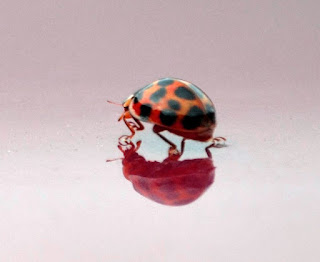We are familiar, to a degree, with the Koran and the Bible, but less so with The Analects. It's a collection of sayings attributed to Confucius. Not a sacred text, since Confucianism is not a religion, but as close as we can get to the principles of that philosophy.
Qufu cave is where Confucius is said to have been born. lonelyplanet.com tells us he was "frighteningly ugly" and "abandoned and cared for by a tiger and an eagle". The cave is on Mount Ni in Shandong province, China.
According to the Book Of Han, a history of the Former Han dynasty - the second imperial dynasty of China - The Analects arose from conversations with Confucius by various of his disciples. I thought I'd mention a few of the sayings, starting with an enigmatic one.
“He Who Knows And Knows That He Knows Is A Wise Man - Follow Him; He Who Knows Not And Knows Not That He Knows Not Is A Fool - Shun Him”
"He who knows all the answers has not been asked all the questions."
“The man who asks a question is a fool for a minute, the man who does not ask is a fool for life.”
“When you see a good person, think of becoming like her/him. When you see someone not so good, reflect on your own weak points.”
“Attack the evil that is within yourself, rather than attacking the evil that is in others.”
“What the superior man seeks is in himself; what the small man seeks is in others.”
“The hardest thing of all is to find a black cat in a dark room, especially if there is no cat.”
I'm not sure how useful these are for your next pub quiz.
Confucianism is characterised by a focus on innate human goodness and the importance of interpersonal human relationships. Those relationships, however, are structured as "a strict hierarchy, with each relation acknowledging and exercising their dominance or submission. There are five key relations under which all social interaction falls: the ruler to the subject, the parent to the child, the husband to the wife, the older brother to the younger brother, and the friend to the friend. Even within friendship, a hierarchy must exist to ensure continuous harmony. Dominant parties should treat the submissive parties with kindness and gentleness, and submissive parties should treat the dominant with reverence and respect. For example, children should only speak when spoken to." [McKenzie Perkins, learnreligions.com]
In my research I discovered the existence of Confucius Institutes, which exist to foster the study of Chinese language and culture. In our post-modern, Sinophobic world, many see this as propaganda. Maybe there are some who think the same of the British Council. The Danes, Hungarians and Latvians, among many others, have cultural institutes with branches in different countries. Western nations perceive the Confucius Institutes, though, as representing malign influencers of a malign, authoritarian government. According to the National Association of Scholars (NAS) of the USA, a conservative group that has advocated the closure of CIs, only around 30 will remain in the United States by the end of 2021, down from 110 in 44 states in 2017.
There are something like 500 Confucius Institutes around the world. The UK has 29. Liexu Cai, of the University of Glasgow School of Education, wrote an article "A comparative study of the Confucius Institute in the United Kingdom and the British Council in China". In it she notes that "the activities of the British Council in China also became popular as one of the central paradigms for educational communication between China and the United Kingdom". You can see an abstract at researchgate.net and even request the whole article if you wish.
I'm not in any position to make judgements on this; I merely offer their existence as something readers may care to examine for themselves.









